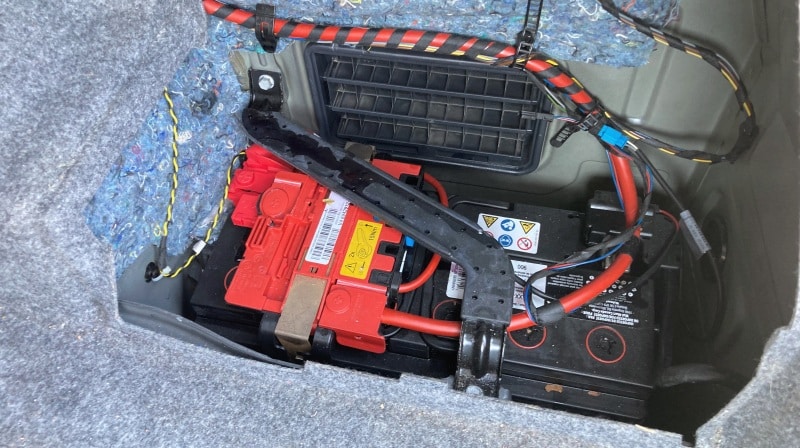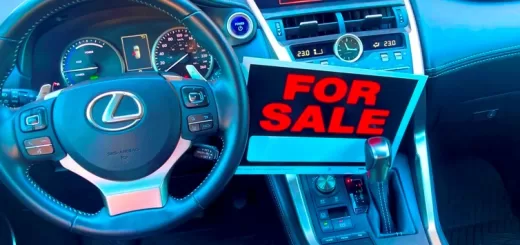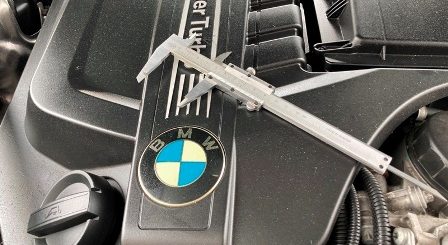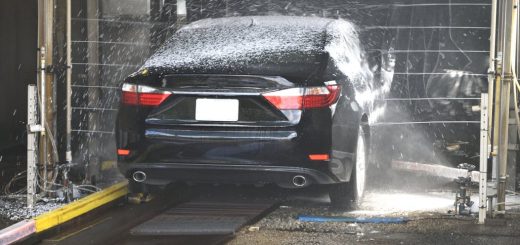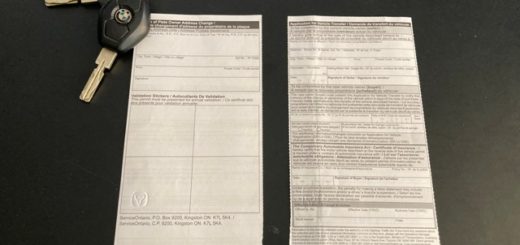What to Check When Buying a Used Car in Ontario
What to Check When Buying a Used Car: Used cars are great when you need to get the most out of your money as compared to new cars. However, used car market is also a dangerous place if you don’t know what you are doing, things can get expensive very fast. You can not completely eliminate risk but with due diligence you can minimize it.
Best and safest way to purchase a used car is having it inspected by your mechanic prior to buying it. In most cases this is easily done if seller agrees to facilitate it, but in some cases seller will refuse.
Walk away if that happens, they might be hiding something (or maybe not) but either way it’s not worth taking a chance. Dealerships on the other hand, are regulated by Ministry of Transportation or other administrative bodies and are generally safer to buy cars from than private sellers.
Also you will need to do some homework in negotiating and get the best price possible: How to negotiate When Buying a Used Car.
Safety Certification When Buying a Used Car
One important thing to bear in mind, if you are buying a used car “As Is” from a private seller in Canada: You will need to pass Safety Certification Inspection in order to be able to plate and drive the car. All existing problems which are covered under safety inspection will need to be repaired for safety certification certificate to be released.
Some things, especially rust on undercarriage will fail safety inspection, rust damage is generally expensive to repair.
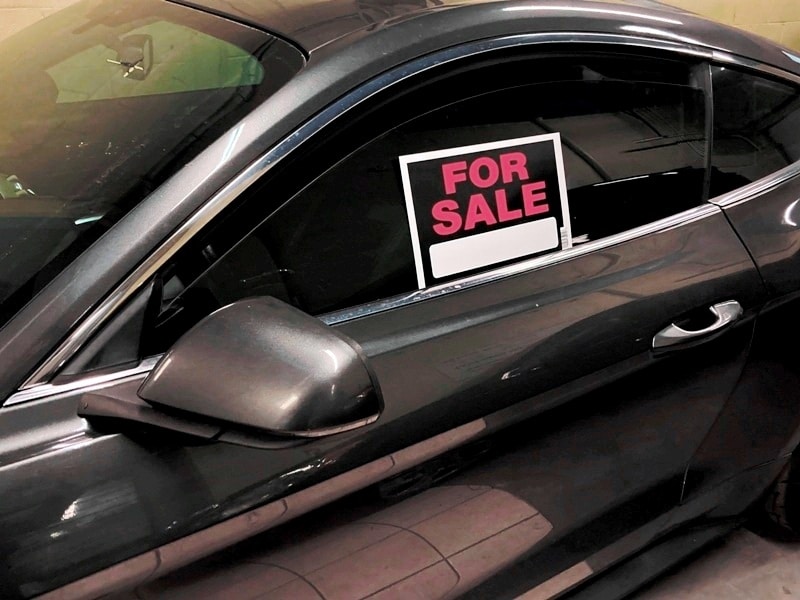
Also, rusted engine frames are common occurrence in places where salt is used in winter (Ontario as an example), another expensive repair. Oil leaks are also covered under safety regulations, and can be quite costly to repair. A used car might look beautiful on the outside while costing thousands to put it on the road and in some cases car is worth less than cost of repairs.
Details on: Safety Certification Requirements.
Service Records When Buying a Used Car
Always ask for service records from seller when buying a used car. Service records are not a must, some people don’t bother keeping records even though they maintained their car by the book.
However, if seller presents you with maintenance records it shows they took care of their car, especially if they have done major work like: timing belts, water pump, suspension or engine repairs. You can also purchase a Carfax or Autocheck vehicle history report which provide details on service and maintenance records alongside accidents and collisions.
Ask seller when they did last oil change, if they say they don’t remember that might be a red flag as it indicates either neglect or they haven’t changed engine oil in a long time (years in some cases).
Engine oil is usually changed every 6,000-8,000km and most people remember exactly when and where they changed engine oil. They had to set up an appointment and go to a mechanic, sit in line waiting, pay for oil change, etc, hard to forget. Beware if they say they don’t remember.
What to Check When Buying a Used Car
If you are in the market for a used car there are some things you can easily check yourself:
1- Vehicle History, Ownership and Liens
2- Vehicle Body
3- Vehicle Drive train
4- Vehicle Chassis Components
5- Maintenance
Vehicle History, Ownership and Liens
1- Check Vehicle History and Odometer Records
Ask for vehicle history to be provided by seller or buy one yourself. Check vehicle history for Accidents and Odometer rollbacks. Odometer registration numbers should be in Ascending order, mileage should go up with each new registration. If you see prior registration with mileage higher than vehicle is presently showing on odometer walk away, it indicates a possible odometer rollback.
However, sometimes clerical mistakes are made by service departments registering mileage when car is sent for service (service department or mechanic writing the wrong mileage). In this case, vehicle history will show Odometer Rollback even when mileage is real and there has been no odometer tampering. Ask seller to clarify if this problem arises.
2- Check For Previous accidents
This is a bit tricky as previous accidents do not generally reflect present condition of a car. Previous accidents which are properly repaired should not make a difference in vehicle operation and safety. However, it also depends on accident repair value. Generally, accidents over $4,000 in repairs indicate vehicle frame was also damaged and repaired.
This is dependent on vehicle brand/model as on some European cars for example $4,000 is only a headlight and damage might be superficial. If previous accident was over or close to $10,000 then vehicle had received severe damage and major repairs.
Do not buy a car which has been branded “Rebuilt” or “Salvage”, not worth taking a chance regardless of price.
Details on: Rebuilt and Salvage Title.
3- Check Vehicle Ownership or Registration
Purchase a used car only from present owner, check seller’s driver license and ownership. Their name on driver’s license should match name on ownership or vehicle registration.
Never buy a car from someone which is not rightful owner of vehicle. If they come up with stories why vehicle is registered to someone else’s name, either walk away or ask for owner to be present. There is a good chance they might be Curbsiders, people selling and buying cars illegally.
Details on: Vehicle Ownership Ontario.
4- Check For Outstanding Liens or Loans
In Canada (or Ontario) a car can be sold while under financing and under liens from a bank or financial institution. It is buyer’s responsibility to check prior to purchase. Buying a car with lien most often than not results in loss of money on buyer’s side.
Everyone knows if their car is under payments or not, and if seller don’t reveal that information to buyer then they are doing it on purpose. Take the money and run scenario.
Details on: Buying a Car with Lien.
Checking Vehicle Body
When inspecting a used car, start by evaluating general condition of vehicle body, it will give you an idea of how a car was treated and maintained:
– Check For Rust
Rust is a very common occurrence in Canada (or Ontario), rust is also quite expensive to repair if damage is extensive. In general, bodyshop repairs cost more than mechanical repairs. Cars usually rust at undercarriage which is hard to see unless you lift the car on a hoist. To check for rust, open doors and look at the bottom of doors and rocker panel, if you see any rust there then undercarriage might be even worse.
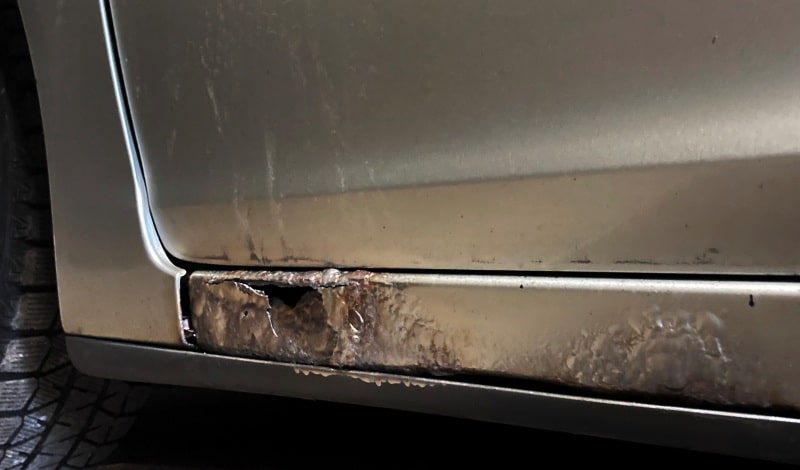
Also open hood, check strut mounts and underside of hood for sings of rust. Take a light and try to see under the car (as much as possible), check floors under driver and passenger side, some cars are knows to rust there first.
Check fender liners, or fender arch. Look for “bubbling” on paint, if you any bubbling then rust will soon appears in that spot, just a matter of time.
– Check Panel Alignment
Check lines between fenders, hood, bumper and doors. Body panels are very hard to match 100% after a vehicle involved in collision has been repaired and repainted. Used cars involved in previous severe accidents will have misalignment issues on body panels and doors.
Lines between panels will not be straight if repairs are not made properly and will have gaps between them. It’s very hard for body shops to align every panel perfectly, in most cases you can see where repairs where performed or which panels were replaced or repainted.
– Check Headlights
Check headlights, do they look the same? If one headlight looks newer then vehicle has been involved in accidents and headlight has been replaced. Also, foggy or faded headlights indicate high mileage and heavy usage, usually close 200k km or more.
If a car has low mileage (under 100k km) but headlights are foggy and worn down then you got to be extra careful as it might point to odometer rollback or tampering.
– Check Car Paint
Look at the car from a distance and check paint color between each panel, it should be the same. If one or more panels have fresher paint or color does match then vehicle has been repainted. Fresh paint will always look different from older paint and is easy to spot.
Take a look at fender liners, black plastic underneath fenders. When a car is repainted usually there is over-spray on fender liners. Paint on fender liners indicates that part of the car has been repainted. Open hood and check engine bay for over-spray.
– Check Tires
Check tire tread depth and tire age (How to Check Tire Age). Looks for cracks or bulges on tire sidewall surface. Cracks indicate an old and worn tire even if tread depth is still normal. Treads should be at least 2mm to pass safety certification.
However, 2mm tire depth means tires will need replacement soon, within few months. As for age, tires should be under 6 years of age, anything over 6 years can be dangerous as rubber starts to deteriorate.
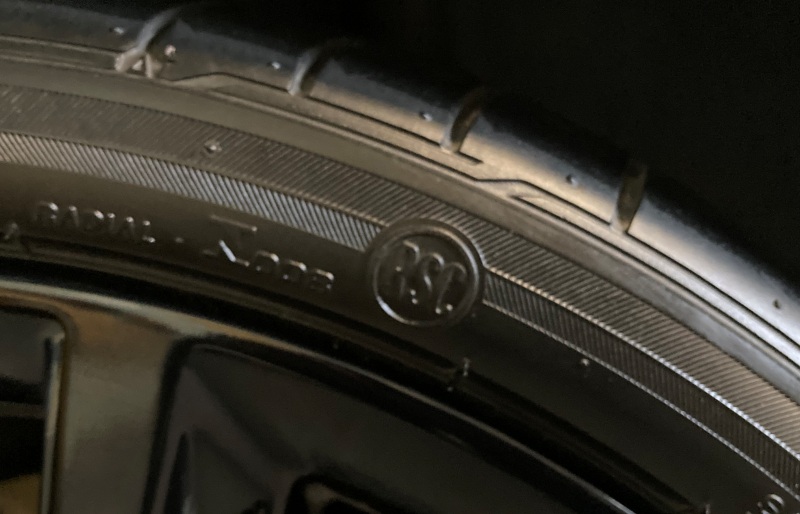
Check for misalignment issues, tires will be worn out unevenly in that’s the case. Unevenly worn tires indicate problems with alignment, suspension or steering. Also check tire brand and size, all four tires should be the same size.
One thing about tires, look at tire brand on sidewall. If you see cheap Chinese tires chances are owner didn’t spend much on maintenance either. On the other hand, if you see Michelin, Pirelli or other expensive brands then you can feel confident they did take care of the car.
– Check Seats and Interior
Look for rips or tears on seats, carpet and hand-rest. Cars with low mileage should have seats that look fairly new. If vehicle has low mileage but seat are badly worn out, walk away, might be an odometer rollback.
Same goes for steering wheel, if damaged or striped from over use then vehicle has high mileage. Test fold down mechanism of rear seats. Check headliner see what condition it is, hanging or sagging head liner indicate high mileage.
– Check Windshield
Inspect windshield for chips or cracks. If its cracked then take that into consideration as a damaged windshield will fail safety certification and should be replaced. Windshield can cost anywhere from $250 to over $1,000 depending on make and model.
You can use it as leverage to lower purchasing price during price negotiations. Mention it as an expense if you are buying the car “As Is” and try to negotiate price down. Otherwise, if you are buying the car “Certified” then windshield is covered by safety certification regulations and seller should replace it.
A chip on windshield here and there should not be a problem. However, if you see a heavily damaged windshield with large cracks then you can be assured if previous owner ignored a damaged windshield (which they are looking at it every time they drive), surely they did not put too much thought on other maintenance items or repairs either.
– Trunk
Look at condition of trunk floor lining, lift trunk floor and see if there is any water intrusion or damage. Check for spare tire and vehicle tools. Remove spare tire and look underneath, it should be dry and should not have any sign of water damage or rust.
Some cars have battery located on trunk floor. If that’s the case, open battery cover and check condition of battery and for water intrusion in battery compartment.
Checking Vehicle Drive Train
This is the most important part which can get expensive real fast if vehicle has any major hidden problems. A preliminary and thoroughly check can save you from a very bad deal, or a very expensive lesson.
Always insist to check a used car when engine is cold, ask seller to not warm up the car prior to your arrival. Warming up engine can hide a wide array of problems which manifest only when engine is cold, same goes for transmission.
If you see a car which has multiple warnings lights and multiple system failures then walk away. Those failures did not happen all simultaneously but happen gradually over a long time. Car was driven to the ground by previous owner(s) ignoring all warning lights indicating system failures and problems.
– Check Engine Light
Most common and dreaded warning light, as it monitors majority of vehicle systems and emission controls. Check Engine light can indicate a simple problem which can be fixed cheaply or major problems with engine and transmission.
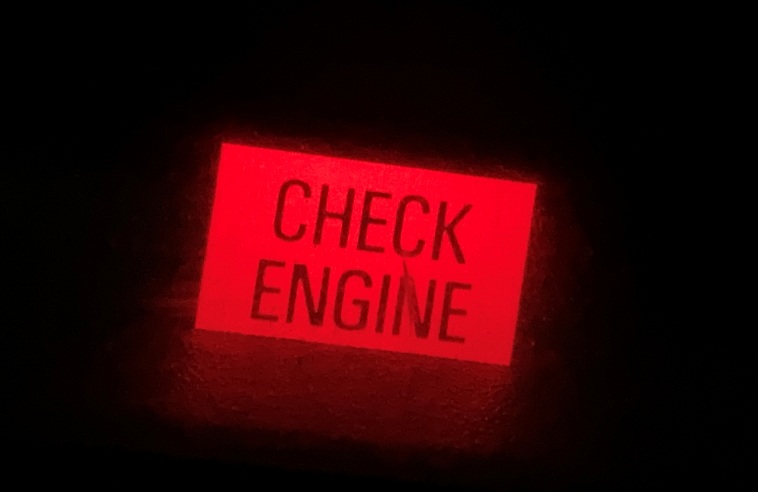
You cant tell what the problem is unless you read OBD2 trouble codes. Do not buy a used car with check engine light on unless you find out what source of problems is. Take the car to your mechanic or buy a code reader to read OBD2 codes yourself.
Things associated with sensors are usually not expensive to repair. However, be careful of multiple misfire, oil pressure and/or oil sensor and Catalytic converter trouble codes. These in most cases indicate major and expensive problems.
Never believe anyone which tells you check engine light is because of bad gas, gas cap or other insignificant things. Make sure to read ODB2 codes or have the car inspected by a mechanic.
Details on: Why Check Engine Light is ON.
1- Check Instrument Cluster Lights
First step is to test instrument cluster lights.Turn ignition on but do not start the car. Look at warning lights on instrument cluster to verify all lights work. See if Check Engine, Battery, ABS, Tracs, Brake, Steering and Oil light are illuminated.
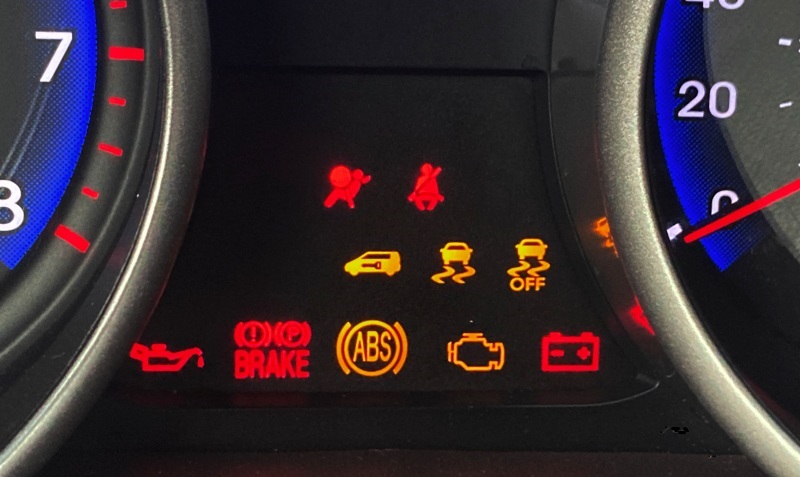
Start the car and see if any lights remain on. Whatever light remain illuminated indicates a problem with that system. Problems can vary from a simple sensor costing $100 to major problems costing thousands.
Details on: Instrument Cluster Warning Lights.
2- Check Engine for Noises or Knocking
Start the engine and listen while idling. If you hear any knocking or tapping noises then walk away. Knocking or tapping noises in vast majority of cases come from internal engine mechanical failures. Rev engine to 3000 rpm and listen again for knocking or tapping noises.
Engine knocking or engine problems can sometimes manifest only when engine is cold and goes away when engine has reached normal temperature (hot)…and vice versa. Make sure to check for noises when engine is cold and hot.
Another issue which happens to high mileage cars is timing chain tensioner failure. Start the car when engine is cold and listen for rattling noises in first 10 second. Rattling noises on cold start indicate a failed timing chain tensioner, which is quite expensive to repair.
3- Check Engine Oil
Remove dipstick and engine oil cap. Oil should be either brown (fresh oil) or dark (used oil), both are normal even though dark oil indicates an oil change is due. If you see any white or milky substance on oil dipstick or engine oil cap then vehicle might have a problem with engine head gasket, a very expensive repair.
Lower part of oil dipstick which stays dipped in oil (part which has oil level marks) will have a different color from rest of dipstick, somewhat darker. However, if lower part of dipstick completely black or has oil sludge on it then you safely assume previous owner(s) didn’t bother to change oil in time or kept very long oil change intervals.
Engine is most likely full of sludge and longevity will be compromised, shorter engine lifespan and problems down the road (most common being burning oil).
Details on: How Often to Change Engine Oil.
4- Check Automatic Transmission
Automatic transmissions are sealed and you can’t see much, most don’t even have an oil dipstick. Also failed or broken automatic transmission very rarely make any noises.
Only way to check is during a test drive. Drive the car and see if you feel any jerking when transmission is shifting gears. Transmission failure manifests in either jerking when shifting or vibrations.
Jerking means transmission is on last legs and will give up the ghost soon. Also, notice if any vibrations are present at low speeds (30-50km/h). Some faulty transmissions cause vibrations at low speeds due to faulty Torque Converter.
Transmissions are very expensive to replace (from a minimum of $3,000 to sky is the limit on some Premium cars, BMW, Mercedes, etc). If you have any doubts about transmission condition walk away or insist to take the car to your mechanic.
Details On: Automatic and CVT Transmission.
5- Check For Oil Leaks
Leave the car running while checking it, and latter move it to a new spot. Check at previous spot for oil or coolant leaks.
Look around the engine for oil wet spots. Engine oil leaks are generally not cheap to repair, and can be quite labor intensive in some cases, especially on European cars. Engine oil will generally leave a dark oily mark on pavement, engine coolant can be green, blue or red.
6- Check Cooling System
Check radiator for signs of cracks or leaks. Look around cooling systems lines for wet spots which indicate leaks.
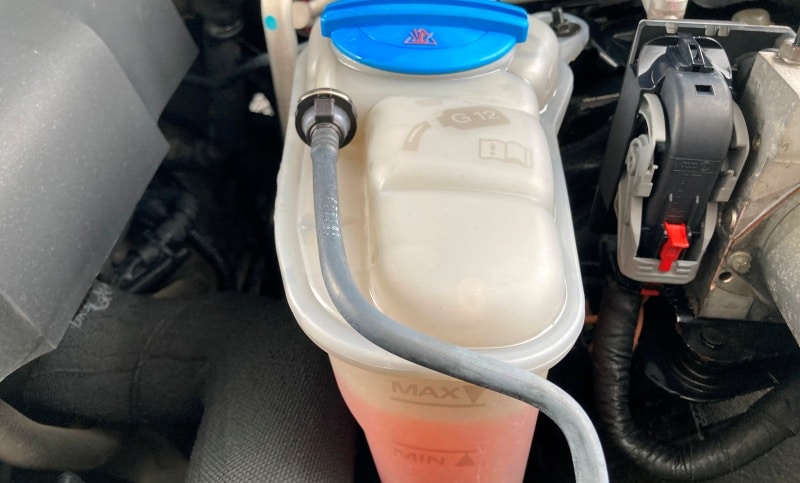
Check coolant level in reservoir. If reservoir is empty then there is a cooling system leak, or neglect on owner’s part to check coolant level and top up as necessary. Failures of cooling system can easily cause engine overheating and irreparable damage.
Details on: Engine Overheating.
7- Check Battery
Check battery for leakage, usually battery acid will form a white to greenish rust on battery terminals and holder. This is not a problem as battery can be easily replaced, but you can use it when negotiating purchasing price.
Generally, batteries located in engine bay are exposed to engine heat and cold weather are more prone to failure and have a shorter lifespan. Batteries located on trunk floor are protected from environmental impact and last longer.
Details on: Battery Lifespan.
8- Check Engine Belts
Start the car (idling) and listen if any squeaky noises come from belts. Also try with engine to 2-3000 rpm. If there are any squeaky or whistling noises then one or more belts will need to be replaced.
Take a flashlight and check engine belts for cracks or rips on outer and inner belt surfaces. Cracks indicate old worn out belts.
9- Check Temperature Gauge
Keep the car running (idling) while checking it. Look at temperature gauge (if it has one), when engine is at operating temperature needle should be in the middle of temperature gauge. Normal temperature for gasoline engines is about 90 Celsius (195 F).
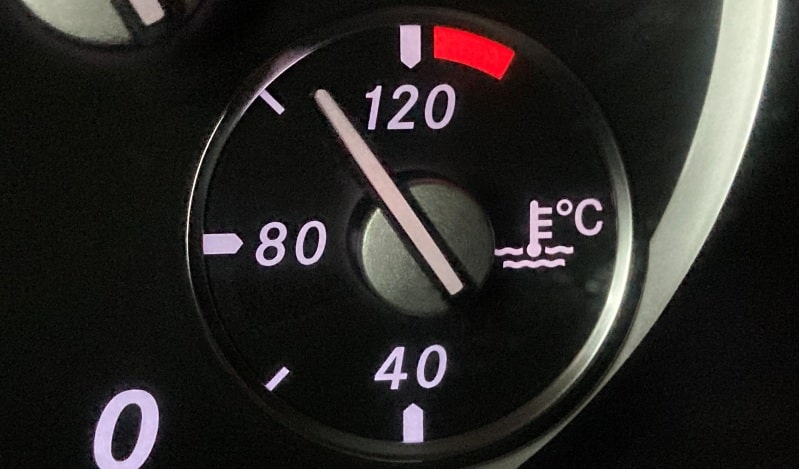
If you see signs that engine is overheating with needle moving upwards, walk away. Overheating is destructive to engines and will always lead to expensive repairs or need for a new engine.
Details on: Temperature Gauge.
10- Engine Oil Warning Light
This is a deal breaker at first sight. Under any circumstance do not buy a car if you see red engine oil light illuminating or flashing. Oil warning light indicates a problem with engine oil pressure which can be unrepairable or cost more than car is worth.
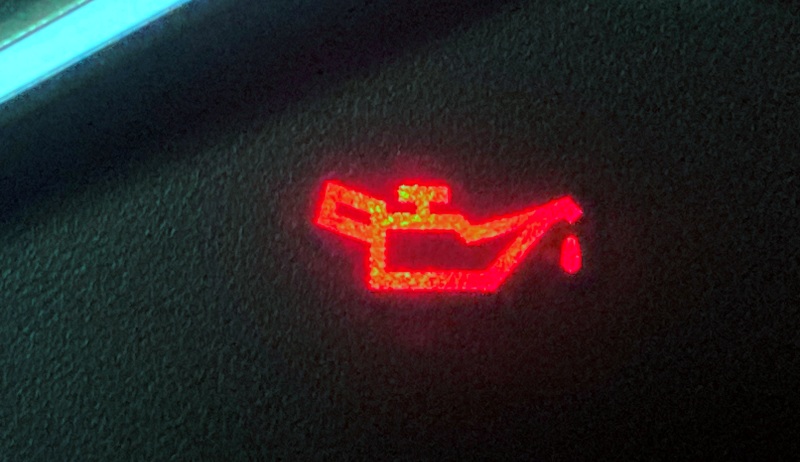
Even in case of yellow engine oil level light (low oil level), still indicates neglect on part of previous owner and damage might have already occurred to engine bearings due to low oil level.
11- Abs and Traction Control Warning Lights
These lights indicate Abs system and/or Traction control are not functioning. Fault can be a cheap sensor (couple hundred bucks) or a control unit (couple thousands).
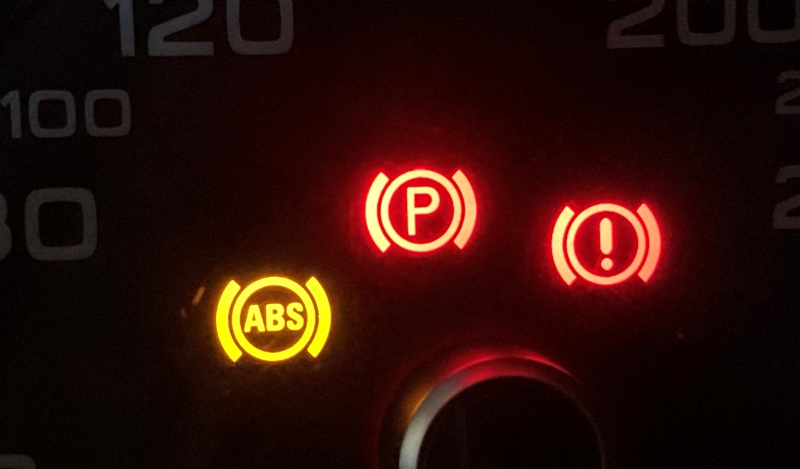
You can’t tell what the problem is unless vehicle is scanned for OBD2 codes. Do not take sellers word for it, take the car to a mechanic and inspect it.
Details on: ABS and Traction Control.
12- Battery Warning Light
Illumination of Battery Light indicates a fault within charging system, usually a dead alternator and in very rare cases battery itself. If you see a battery light then you can safely assume car needs a new alternator which depending on vehicle brand and alternator design can cost from few hundred dollars to well over $1,000.
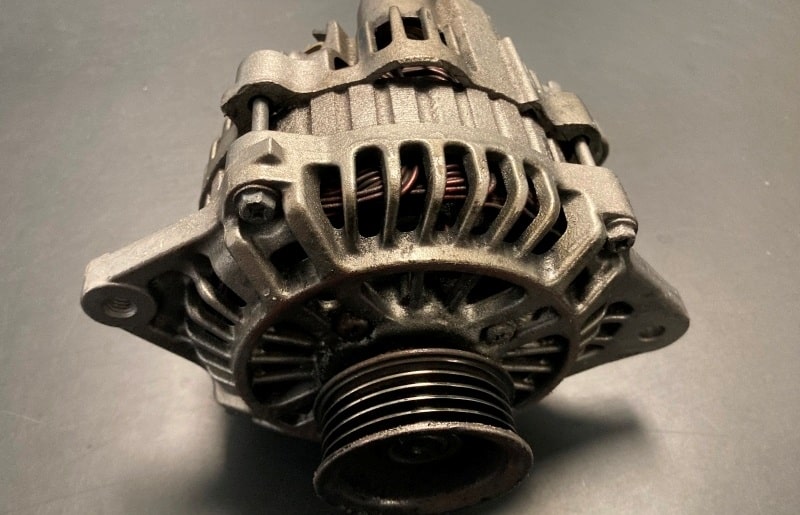
Alternator and battery testing procedure: How to Test Battery and Alternator.
Checking Vehicle Chassis Components
1- Check Air conditioning
Turn temperature dial to cold and turn on air conditioning, make sure it works. Repairs related to air conditioning are generally expensive especially if compressor need to be replaced. If Air conditioning doesn’t work then use it as leverage when you deal about purchasing price.
2- Check Power Windows and Mirrors
Check operation of all power windows when buying a used car, power window regulators (mechanism which moves glass up and down) are expensive to replace. Listen for grinding noises when windows operate up or down. Grinding noises means window regulator is on last legs and will have to be replaced soon.
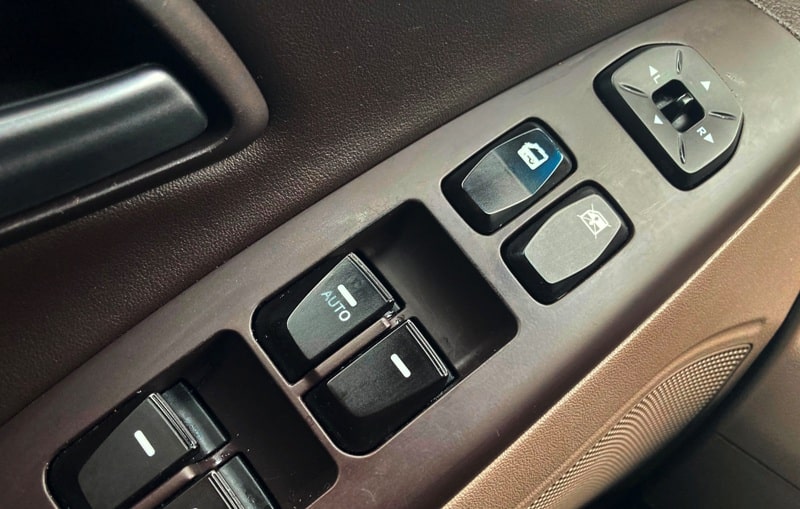
Test power mirrors, move them in all directions. Also checks for cracks on mirror glass and cover.
3- Check Power Seats
Move power seats in all positions, seats should operate without interruption and smoothly. Also check heated seats if equipped. Turn heated seat switch to high, it should warm up within a minute or so. Listen for abnormal noises which indicate a failed or failing seat motor.
If power seat is broken and do not move then you got a decision to make. Power seats are very expensive to repair and in some cases require seat to be replaced completely. Ask owner/seller to fix it as part of the deal, otherwise take an estimate from a mechanic on how much will cost to fix it.
4- Check Radio and Navigation system
Turn radio on and go thru channels and bands (AM/FM). Turn volume to maximum for few seconds to check speaker condition. If you hear noises at high volume, speakers are failing. Test navigation system and back up camera if equipped.
5- Test Dashboard Control Switches
Check electrical equipment such as: Heating and Cooling Fan, Turn signal switch, Light switch, Hazards switch, Cruise control, Steering Radio switches, USB and Power Ports, Fog lights, Wipers, Power windows, Power mirrors, Sunroof.
6- Check Lights
Checking interior lights is easy, just turn them on and see if they works. Also, check instrument cluster lights, illuminate and dimming instrument cluster light to verify operation. Exterior lights are a bit trickier as two people are needed, but you still can do it yourself, just a bit more time consuming. Test headlights, turn signals, reverse lights, fog lights and day lights.
7- Test Windshield Wipers
Test wiper operation, turn them on and spray water on windshield, wipers should leave no streaks on windshield glass if blades are in good condition. Test rear wiper too if quipped. Wipers, front and rear should not be a problem, cost very little to replace.
If you see windshield wipers in very bad condition (damaged, rusted or with rubber hanging out) then proceed with caution. What else previous owner neglected if didn’t bother or could not afford to replace a $20 windshield wiper.
(If you are also looking for a fast and safe solution to sell your car, more here on “How To Sell Your Car Fast” )
Take the Car for Test Drive
Always take a test drive before buying a used car, never buy one unless you test drive it and check thoroughly. Close all windows, turn radio off and keep heating/cooling at lowest speed to make cabin as quiet as possible.
Listen for abnormal noises from suspension. Suspension noises can be tricky as it might be a small cheap thing to repair or a very expensive one. It is very hard to tell unless you raise the vehicle on a lift and make a in depth inspection. However, suspension noises generally indicate neglect. People know their cars and quickly notice new strange noises.
If they failed to repair them it shows neglect. Suspension problems can also be dangerous, especially if there are heavy clunking noises which might indicate failure of ball joints or tie rods.
Check steering by making couple tight turns. If you hear clicking noise when turning at low speed then a CV joint is failing which might cost quite a bit to replace.
See if vehicle pulls to one side when driving in straight line, if vehicle pulls to one side then alignment might be off. Steering feel while driving should be comfortable, if steering feels loose or vibrates then there is a problem with steering or suspension components.
Check brakes at low and high speed
Brake pedal vibrations at high speed indicate failed front disc brakes. Vibrations of steering wheel while braking is also a symptom of failed front brakes.
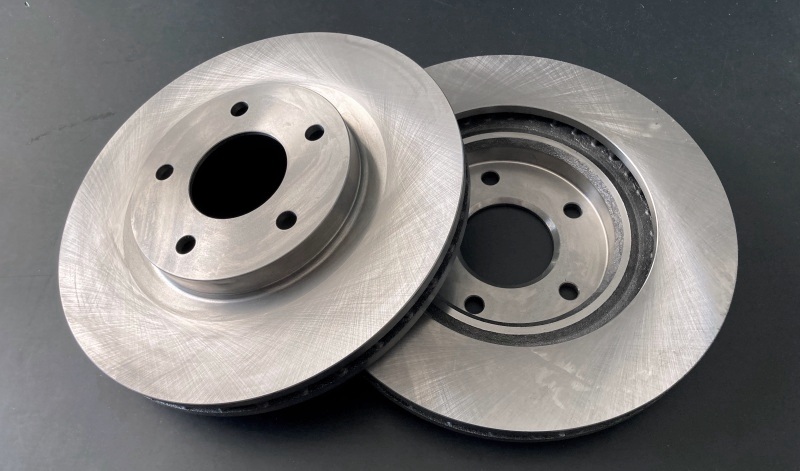
Listen for grinding noises which indicates lows brake pads and/or rusted brake rotors. Also, test brake pedal by pressing and holding it (transmission in park), pedal should stop mid way. If pedal falls to floor then there is a major problem with brake system.
Details on: How Brakes Work and Types of Brake Pads.
Automatic Transmission should shift smoothly, if you feel any jerking when changing gears walk away. Transmission jerking is a symptom of transmission failure, very expensive repair.
Go over speed bumps to test amortization, vehicle should recover firmly after a bump. If vehicle keeps vibrating after going over a speed bump, shock absorbers or struts need replacement. Shocks and struts are also expensive to replace, labor intensive.
Check speedometer and odometer while on test drive, both should be working. See if odometer registers mileage while driving, mileage should go incrementally up as you drive.
Ask For Maintenance Records
As we said previously, check for maintenance records as previous maintenance is one of most important considerations when buying a used car. If you see a vehicle which looks neglected in general (looks older than it is, dirty, scratches, worn steering wheel or seats, etc) then chances are owner did not bother to do much maintenance either, car was driven to the ground.
Lack of maintenance causes all kind of problems and reduces lifespan of engine and transmission. Cheap maintenance items turn into repair items very fast, and very expensively.
Ask for maintenance records, see what kind of repairs they did and when they did it, especially major repairs. If owner has all maintenance records, then you maybe found a winner. Vehicle should be in good condition as maintenance records show pride of ownership.
If owner (seller) has no maintenance records, before buying their used car you should get a Carfax report to check what maintenance records are registered on vehicle history. If there are no maintenance records in vehicle history too then walk away, you never know, vehicle might have never received any maintenance at all.
In any case, you should take the car to your mechanic as a final step. Nothing will substitute an inspection by a mechanic where the car is lifted of the ground and thoroughly inspected.
In case you finally purchased a used car, here is what you need to do to prolong lifespan and reliability: Maintenance After Buying a Used Car.
Comments: If you have any questions or suggestions related to this post or Used Car Toronto in general, don’t hesitate to use comment section below.


